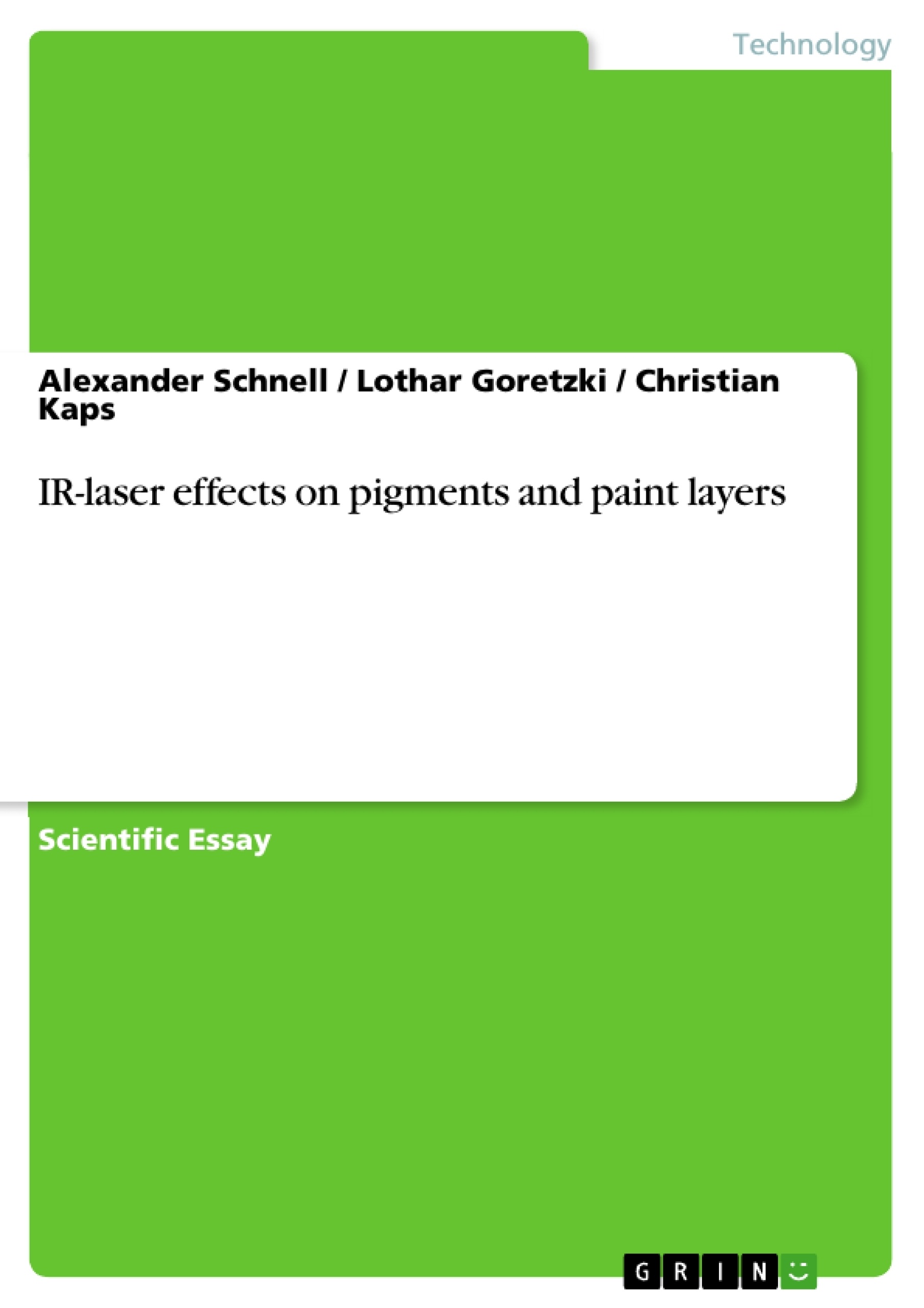Laser cleaning of polychrome surfaces is currently problematic due to the fact, that laser irradiation can cause discoloration of pigments in paint layers. A test program was worked out to analyse the chemical and physical background of typical “blackening effects” for different pigments. The analytical methods ESEM, XRD, DTA, FTIR and NMR were used to describe the reactions of historically relevant inorganic pigments and organic binding media caused by laser irradiation at 1064 nm. The discoloration of pigments and paint layers was documented by colour measurement. Further the determination of discoloration thresholds of energy density of pigments and paint layers was a main part of the research.
Table of Contents
- Introduction
- Experimental methods
- Table 1. Analysis techniques and instruments
- Results and discussion
- Fig. 1. Surface of titanium white pellet after laser irradiation at 600 mJ/cm² (magnification 10000x)
- Fig. 2. Surface of zinc white pellet after laser irradiation at 600 mJ/cm² (magnification 16000x)
- Fig. 3. H-NMR proton spectra (overview spectra) of solved gas phase emitted from paint layer containing linseed oil as binding media
- Fig. 4. Percentage distribution of discoloration thresholds of energy density (related to all tested pigments and paint layers)
- Conclusions
Objectives and Key Themes
This research project investigates the cleaning of polychrome natural stone surfaces by laser ablation without causing damage to the contained pigments and binders. The main objective is to determine the discoloration thresholds of energy density for different pigments and paint layers, and to analyze the chemical and physical background of the "blackening effects" caused by laser irradiation.
- Effects of laser irradiation on inorganic pigments and organic binding media
- Discoloration thresholds of energy density for different pigments and paint layers
- Chemical and physical reactions induced by laser irradiation
- Application of laser cleaning for polychrome surfaces
- Development of a laser cleaning method for polychrome artworks and buildings
Chapter Summaries
The introduction outlines the challenges of using laser cleaning for polychrome surfaces due to the potential damage to pigments. The project aims to identify the discoloration thresholds of different pigments and paint layers, and to understand the chemical and physical reactions induced by laser irradiation. Chapter 2 describes the experimental methods, including the selection of pigments, binders, and laser parameters. Chapter 3 presents the results and discussion, focusing on the analysis of the chemical and physical changes caused by laser irradiation on pigments and paint layers. The analysis includes observations of melted pigment particles, phase changes, and gas phase analysis. The chapter also presents the determination of discoloration thresholds for various pigments and paint layers.
Keywords
Laser cleaning, polychrome surfaces, pigments, paint layers, discoloration, energy density, chemical reactions, phase changes, thermal effects, Nd-YAG laser, spectrophotometer, ESEM, XRD, DTA, FTIR, NMR.
- Quote paper
- Dipl.-Ing. Alexander Schnell (Author), Lothar Goretzki (Author), Christian Kaps (Author), 2003, IR-laser effects on pigments and paint layers, Munich, GRIN Verlag, https://www.grin.com/document/93399




